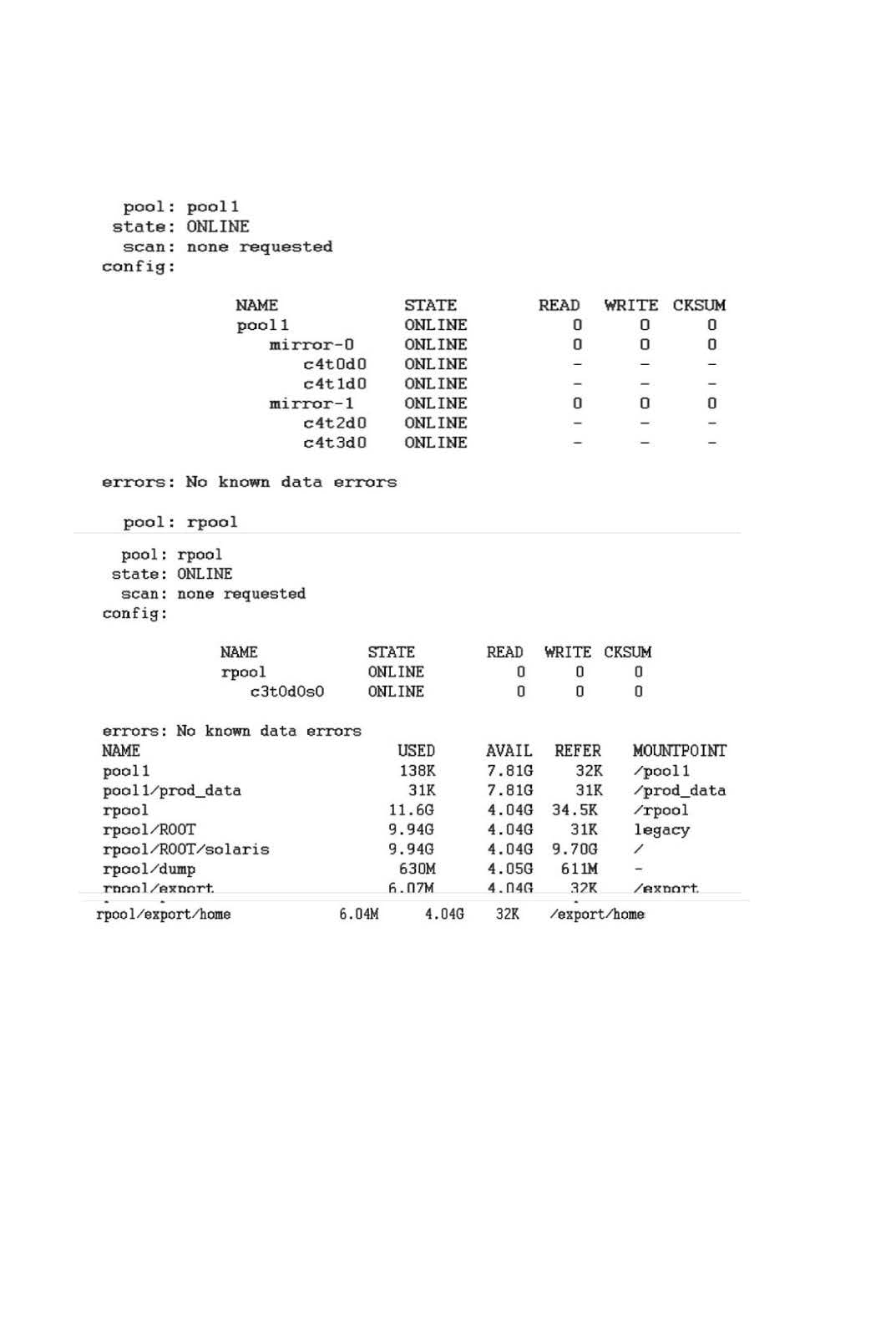Exam Details
Exam Code
:1Z0-820Exam Name
:Upgrade to Oracle Solaris 11 System AdministratorCertification
:Oracle CertificationsVendor
:OracleTotal Questions
:133 Q&AsLast Updated
:Mar 27, 2025
Oracle Oracle Certifications 1Z0-820 Questions & Answers
-
Question 91:
You need to set up a local package repository to serve 75 client systems. Multiple clients will being the package repository concurrently and you need to ensure that the local repository performs very well under this heavy load, especially during package intensive operations. Which option would ensure the best performance of the repository during package- intensive rations by multiple clients?
A. Set up multipathing on the package repository server to distribute the network load multiple network interfaces.
B. Deploy a second instance of the package repository server to run as a read writable mirror.
C. Deploy a second instance of the package repository server to run as a read-only mirror.
D. Deploy a second instance of the package repository server to run as a clone of the primary repository server.
E. Deploy a package repository locally on each client.
-
Question 92:
View the Exhibit and review the zpool and ZFS configuration information from your system.

Identify the correct procedure for breaking the /prod_data mirror, removing c4tOdO and c4t2d0, and making the data on c4t0d0 and c4t2d0 accessible under the /dev_data mount point
A. zpool split pooll pool2 c4t0d0 c4t2d0 zpool import pool2 zfs set mountpomt=/dev_data pool2/prod_data
B. zpool detach pooh pool2 zpool attach pool2 zfs set mountpoint=/dev_data pool2/prod_data
C. zfs split pool1/prod_data -n pool2/dev_data zfs set mountpomt=/dev_data pool2/prod_data
D. zpool split pooh pool2 c4t0d0 c4t2d0 zpool import pool2
-
Question 93:
You need to migrate a UFS file system named /production_ufs to a ZFS file system named / production_ufs. The /production_ufs file system cannot be taken down or be out of production during the migration, and the current /production_ufs file system must remain active until the /ptoduction_zfs file system is copied and ready.
Which method allows you to meet both requirements?
1.
Copy live data from /production_ufs to /production_zfs while /production_ufs is in use.
2.
When the copy is complete, /production_zfs will contain an up-to date copy of /production_ufs
A. Create a snapshot of the UFS file system. Create the new ZFS file system. Use cpio to copy data from the snapshot to the new ZFS file system.
B. Create a new Boot Environment. Create the ZFS file system. Use lucreate -m to copy data from the Current UFS file system to the new ZFS file system.
C. Mirror the existing UFS file system by using SVM. After both submissions are in sync, migrate one of the submissions to a ZFS file System by using Live Upgrade.
D. Create the new ZFS file system by using zfs create import to import data from the existing UFS file system into the new ZFS file system
E. Create the new zfs file system by using the zfs create -o shadow.
-
Question 94:
In an effort to reduce storage space on your server, you would like to eliminate duplicate copies of data in your server's ZFS file systems.
How do you specify that pool1/data should not contain duplicate data blocks (redundant data) on write operations?
A. zfs create - o compression=on pool1/data
B. zpool create -o deduplication =on pool1; zfs create pool1/data
C. zfs create - o deduplication=on pool1; zfs create pool1/data
D. zfs create - o dedupratio=2 pool1/data
E. zfs create - o dedup=on pool1/data
-
Question 95:
On server A, you enter the following command to add a static route to serverA route -p add -host 192.168.1.101 192.168.1.101 -static What is the purpose of this command?
A. to temporarily bypass IP Filter rules
B. to specify an IPMP target IP address to in.mpathd
C. to specify routing to an adjacent network when in.rdisc is not used
D. to specify routing to an adjacent network when in.routed is not used
E. to ensure the IP address for serverB is not flushed from the ARP cache
F. to optimize link aggregation using a direct connection between two systems
-
Question 96:
This iron is displayed on the desktop of a laptop computer, which is running Oracle Solaris 11.

Which two statements describe the Information conveyed by this Icon?
A. NWAM is disabled.
B. NWAM is automatically configuring the network.
C. The wireless network card is manually configured and operational.
D. The wireless network card is manually configured but not operational.
E. The wireless network card is automatically configured and operational.
F. The wireless network card is automatically configured but not operational.
-
Question 97:
Which three methods of delivering a package are provided by the image Package System (iPS)?
(Choose tnree.)
A. Publish to a local file-based repository.
B. Publish as an SVR4 package.
C. Publish to a remote HTTP-based repository.
D. Convert to a p5p package archive.
E. Convert to a SVR4 package archive.
F. Publish as a tar archive.
G. Publish as a directory on a USB or DVD drive.
H. Publish as a Linux RPM package.
-
Question 98:
Which four statements describe the function of the svc://system/install/server;default service? (Choose four.)
A. it associates an install image with a named install service.
B. Client systems use the service name to find the correct install image.
C. Every Oracle Solaris 11 system uses this service to find its IPS publisher and to locate its IPS repository.
D. A server can have multiple instances of the install/server service, each associated with one boot image.
E. This service is not present on a server by default.
F. This service is present on every Oracle Solaris 11 system, but it is not enabled.
G. A new install/server service cannot be created without DHCP.
H. An Al install server can have several instances of this service, but can have only one install service running at a time.
-
Question 99:
Which three statements accurately describe the Automated Installation (Al) client? (Choose three.)
A. if the Al client does not match any cnteria to use a custom manifest or script, the default manifest is used.
B. if the A! client does not match any criteria to use a custom manifest or script, the automated installation aborts.
C. Any manifest or script in a service can be designated to be the default for that service.
D. Only the default.xml file is used as the default Al client manifest.
E. if a client system does not use any SC profile, then an interactive tool opens on that client at first boot after that client installation to complete the configuration of that client.
F. If a client system does not use any SC profile, then the install server will use the default SC profile.
-
Question 100:
You want to deploy oracle Solaris 11 with the automated installer (AI). You need to make sure that your server and network meet the requirements for using AI.
Choose the three options that describe; the requirements for using AI.
A. You can create only one manifest per install service. If you need more than one manifest, create multiple install services.
B. If two client machines have different architectures and need to be installed with the same version of the Oracle Solaris 11 OS, then create two AI manifests and a single Install service.
C. You need a separate install service for each different client architecture that you plan to install, and for each different version of the Oracle Solaris 11 OS that you plan to install on client systems.
D. If two client machines have different architectures and need to be installed with different versions of the Oracle Solaris 11 OS, then create two AI manifests and two install services.
E. The install server needs to be able to access an Oracle Solaris Image Packaging System (IPS) software package repository; the clients do not.
F. The install server can be either an x86 machine or a SPARC machine.
Related Exams:
1Z0-020
Oracle8i: New Features for Administrators1Z0-023
Architecture and Administration1Z0-024
Performance Tuning1Z0-025
Backup and Recovery1Z0-026
Network Administration1Z0-034
Upgrade Oracle9i/10g OCA to Oracle Database OCP1Z0-036
Managing Oracle9i on Linux1Z0-041
Oracle Database 10g: DBA Assessment1Z0-052
Oracle Database 11g: Administration Workshop I1Z0-053
Oracle Database 11g: Administration II
Tips on How to Prepare for the Exams
Nowadays, the certification exams become more and more important and required by more and more enterprises when applying for a job. But how to prepare for the exam effectively? How to prepare for the exam in a short time with less efforts? How to get a ideal result and how to find the most reliable resources? Here on Vcedump.com, you will find all the answers. Vcedump.com provide not only Oracle exam questions, answers and explanations but also complete assistance on your exam preparation and certification application. If you are confused on your 1Z0-820 exam preparations and Oracle certification application, do not hesitate to visit our Vcedump.com to find your solutions here.